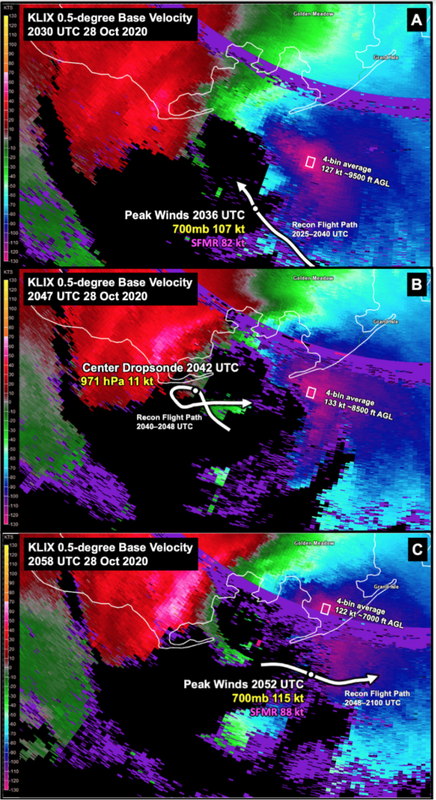ncforecaster89 wrote:Audrey2Katrina wrote:I concur with Shell Mound, and to some degree ncforecaster89 (excepting this part: "Although the winds were still of Cat 2 strength as Zeta moved directly through the city of New Orleans,", as I found NO evidence of Cat 2 winds anywhere in or through New Orleans, not from the weather bureau, not from any televised reporting station. That said I suppose there might have been isolated gusts barely reaching that level, however we bandy about terms like Cat 2 or Cat 3 too much without distinguishing "gusts" from "sustained" and I can assure you New Orleans had NO sustained Cat 2 winds. Given that ncforecaster89 brings a valid point about travelling over the water. I hadn't considered winds over water where there would be considerably less friction from the land. That said, I also agree that from every indication I saw, Sally looked more the viable candidate as a MH than Zeta. I forgot to mention that the report stated landfall for Zeta was near Cocodrie, which is where at least two of my friends were--and they still say no sustained winds of 110 mph or greater hit them. They DID say the surf was (obviously) rough... and the winds "in gusts" probably reached over 110, but having been through genuine Cat 3's before, this one was tame and that's what worries me. People will think that if that was a Cat 3, and they did just fine going through it-- they might think a bigger more powerful Cat 2 is nothing to worry about--when it is! And a bigger more powerful Cat 3 can be devastating along coastal areas. Yes, the winds were obviously around Cat 2 "In Gusts", but storms are classified by sustained winds and not gusts. I was glad to see that at least on my television they made that distinction. I can't post the picture, obviously, but I have one of all the reported highest "gusts" and few of them are mid to high Cat 1, and only Gulfport showed minimal Cat 2.
Zeta was such a non-event for the vast majority down here that I truly worry the young, in particular, will underestimate the next Cat 3 that is a REAL Cat 3 and much bigger, and that could be a fatal mistake. On the other hand, a friend of mine in Gulf Shores who rode out Sally, said that was worse than he remembered from Betsy which we both rode out in our homes back in '65. But I think his memory is fading as I remember seeing Betsy blow a roof off of garage like it was a toy. Ahhh, I digress; but my main point is that Zeta was borderline Cat 2/3 but I don't believe it was a bonafide Cat 3... that's my opinion. We may well talk of not having much better science than what we now have; however I'm sure the same was said of the science we had in 1970. People tend to think they live in a technology that has reached its zenith, --that is until the next level shows up and is a quantum leap forward. I hope so, for the sake of people caught in their paths, as I had a family member killed by Katrina. (He was a first responder.) These monsters (yes even Zeta types) need all the respect we can give them. Tropical Storms can be killers and this was, to be sure, much worse than a tropical storm. They may be intriguing and even fun to view, plot, follow, and discuss; but they are, in the final analysis, very dangerous. I hold hope for improvement as better still in years to come, in forecasting and analyzing these killers for the sake of humanity.
I agree with your post, but need to clarify that I didn’t say or mean to imply that Zeta brought Cat 2 winds to New Orleans, as it moved directly over the city. Those Cat two winds were certainly just to the E of the city. I’d estimate that no part of the city experienced wind gusts even reaching 100 mph. To your point, N.O. likely had a Cat 1 hurricane impact.
Also want to mention that Hurricane Zeta was moving very fast!




